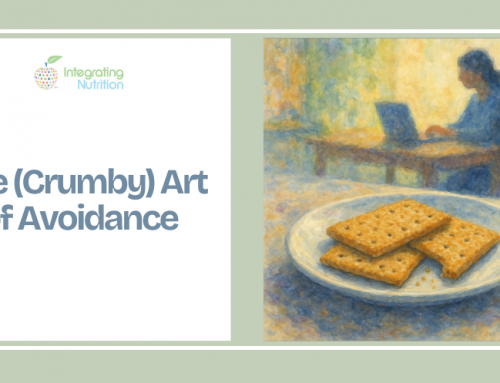Part Two – Emotion-Triggers
Last time, we discussed a UCLA study that links loneliness with increased cravings for higher-calorie, sweet foods. In that study, brain scans revealed heightened activity in regions associated with rumination and visual processing, while areas governing reasoning and executive control show reduced activity. These findings suggested that loneliness triggers the brain’s reward system and mood-enhancing neurotransmitters. This mirrors the same prehistoric survival mechanisms that were triggered in early humans, when their social bonds (needed for survival) were at risk. The takeaway is that modern humans still perceive loneliness as a threat, leading to a triggered craving for comfort through calorie-dense foods. When this becomes a major aspect of someone’s relationship with food, it contributes to disordered eating. People who fall into this category are in good company: American Psychological Association released information saying that 27% of adults admit to eating to manage stress.
When we don’t understand these dynamics, we may come to believe that food has power over us. It may seem that once we are triggered by a negative emotion, we are pretty much unable to resist.
As we often point out, by embracing mindfulness we can see the light at the end of the tunnel. Because fortunately, simply becoming aware of the dynamics of why we make unhelpful eating choices is often a good first step in improving our intake habits.
Understanding Our Emotion Triggers
Many people are triggered into reaching for food when feeling stressed, though eating something is not a way to fix emotional angst. I often point out that if hunger is not the problem, food is not the solution.
When we understand the influence of our emotion-triggers, we can question our response to them. We might ask ourselves, “Am I hungry or just responding to a feeling?” or even “Do I really want to eat this treat, or is it an involuntary reaction?” When we have this sort of self-knowledge, we can take back our power over food.
There Are Ways to Overcome Emotion Triggers
Once we are aware of how emotion-triggers work, we can make choices that address the cause of our triggers by investigating the many non-food ways to self-soothe.
Many of these ways are often discussed as go-to solutions. These include going for a walk, engaging in yoga, or doing deep breathing exercises. Adequate sleep and exercise can also help with emotional well-being.
In the specific case of loneliness, there are plenty of ways to work toward solving those circumstances. Trying to reach out to old friends or otherwise taking steps to expand one’s social circle seem like obvious steps toward mitigating those feelings.
A quick Google search might reveal nearby social groups or clubs focused on hobbies or other fun and satisfying activities (like book clubs, film clubs, fitness classes, art groups, animal rescues or volunteer work.) There are online meet-up groups aimed at common interests. Such venues provide opportunities to socialize with like-minded people in a relaxed setting.
Community events—often listed in the local newspaper—offer other social opportunity potential. Adult education lectures or art festivals can be great ways to meet new people
And these are just a few suggestions. I’ll bet you can come up with a few more that revolve around interests that you have.
The Bottom Line
Recognizing the how-and-why of the link between unpleasant emotions and cravings is a crucial step in regaining control over our eating habits and improving our emotional well-being. As we acknowledge our specific emotional triggers, we have the opportunity to transform our relationship with food. And by embracing mindfulness and taking action steps to address the issues that cause emotion-triggers, we can create a foundation based on resilience, authenticity, and a more balanced life!





